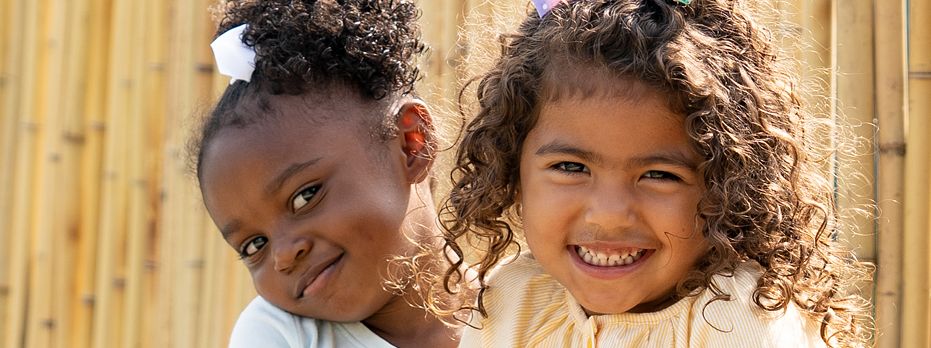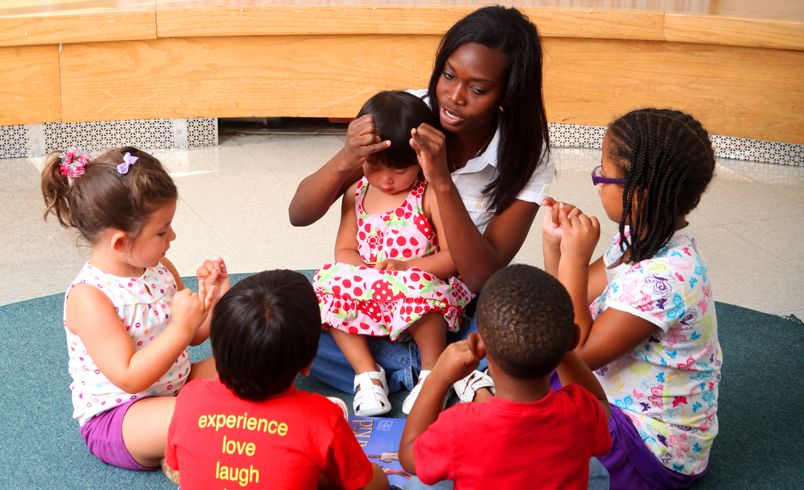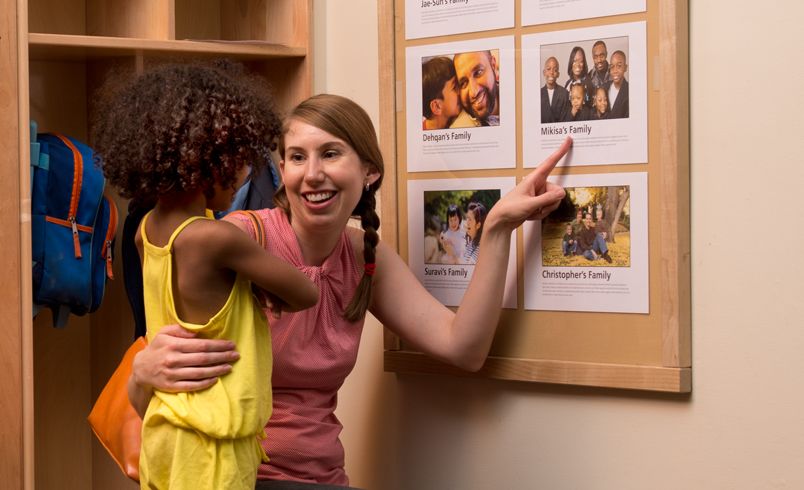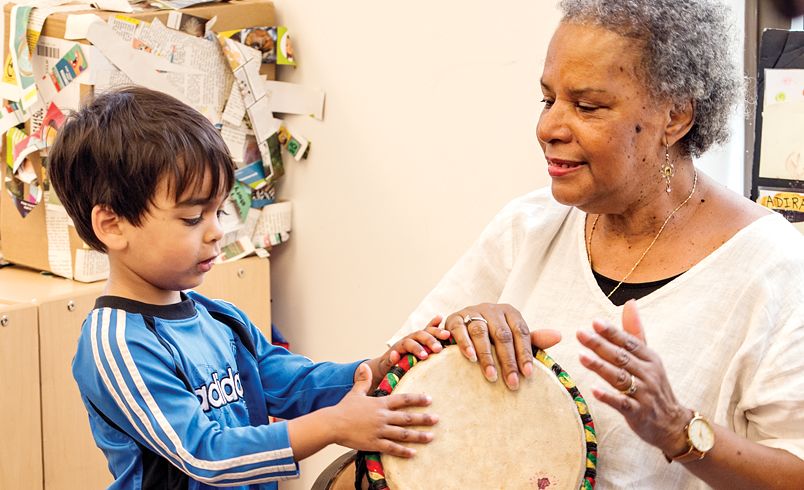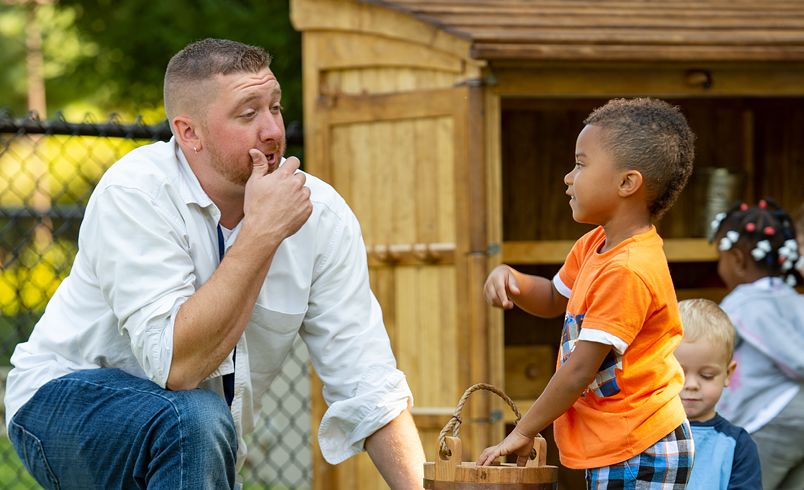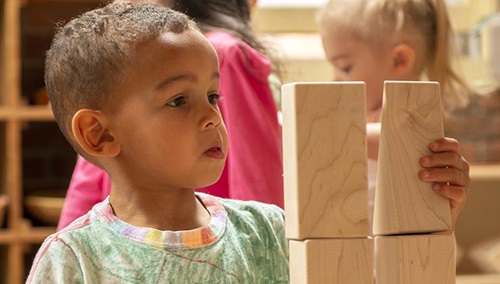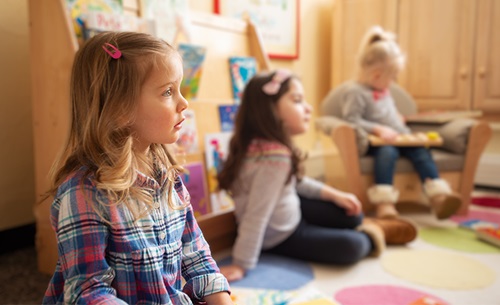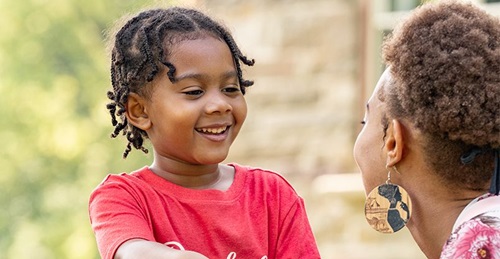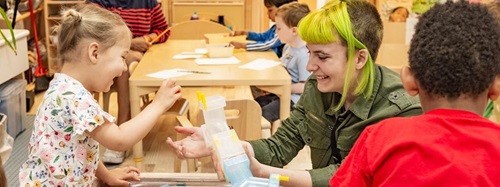The Way Forward:
Responding to Racism in ECE Programs and Schools
| July 2020The recent weeks of protests over racial injustice creates a difficult challenge for early childhood programs. What can we, as a field of education, do to respond to these events? While we recognize the desperate need to address the issue and make substantial changes, it is complex for us because:
- Racism and structural racism are problems created and perpetuated by adults, not young children;
- Young children do not learn the same way that adults do. Teaching them about equality and fairness, the way we would teach adults, does not work;
- Employment in the early childhood field in many ways represents the extreme inequalities in this country. Women, many of them minority women, receive very poor wages and little respect; often holding the lowest positions within their respective programs;
- The early childhood field tends to be very segregated, with school programs often reflecting segregated housing patterns, parents choosing programs that match their culture, religion, and race, and government programs (i.e. Head Start and block grants) primarily serving low income, often minority families.
These challenges do not mean, however, that there is nothing we can do! There are positive steps we can take in our daily life and in our programs to address the serious issues of racism and inequality in this country. As we consider our response, these are some things that need to be kept in mind:
1. How young children learn.
Young children learn by hands-on interactions with the environment—through play, risk-taking, trial and error, and practice. They also learn by imitating models—both real (i.e. teachers and parents), and symbolic (books, toys, TV programs, pictures, etc.)(Bandura, 1969).
2. How children develop moral reasoning
.Young children do not understand complex concepts such as justice, racism, equality, and the words used to represent them. They do understand fairness, violence, anger, exclusion, and bullying. And they deeply understand and notice physical differences such as skin color, eye shape, accents, and so on. According to Kohlberg, a child must progress through many stages, beginning with egocentrism (what’s good for me is good for everyone) and finishing with a mature idea of moral reasoning (1963).
3. Any child who is perceived as being different may experience prejudice.
My late African American wife, who grew up in segregated Kansas City in the 1960s, experienced bullying from black peers and teachers because of her darker skin; her own biracial children have received as much prejudice from Black and Latino children and teachers as White ones. Many children with severe disabilities also struggle with abuse from other children.
4. Identity is both personal and social
.A person’s identity is comprised of two complex constructs—personal identity and social identity (Cross, 1987). Personal identity is what a child can do and how they feel about how they can do it—competence and self-efficacy; social identity includes race, gender, ethnicity, and language. What’s important is that we must address both of these constructs, as both are critical and separate (Cross, 1987).
5. Young children’s views of the world are simple, egocentric, and largely inaccurate
According to Piaget (1952), children construct their own reality, based on concrete interactions with their environment. These experiences are then used by the child to create crude schemas—a basic model about how the world works. With additional experiences these models became more sophisticated, until they reach accuracy. The more complex the concept, the more time it takes to fully develop.
So, What We Can Do?
The following suggestions are program-wide, and require long-term, systemic change. They can be addressed through committees, support groups, or one-time initiatives that include participants from every level of the program, including parents.
1. Ensure diversity at all levels of the program.
When my biracial son attended a gifted program I complained to the principal that the program lacked diversity. She informed me that the students absolutely loved Joe, the only minority on the staff. He was the Black janitor.
Check the structure and staffing of your program. Are all the minorities at the lower positions—i.e. aides, paraprofessional, and caregivers—while Whites are the upper positions—administrators, specialists, etc.? Does your board include people of various racial and ethnic backgrounds, members with disabilities, and so on?
2. Ensure pay equality for staff members working directly with children.
When I discuss pay inequality with my community college students, I suggest to them, “Whenever you hear a politician express the importance of early childhood, ask them, “So, why are teachers of young children paid so little?”
Possibly the biggest inequity in our field is the extremely poor wages and lack of benefits for staff members working directly with children, the majority of whom are women and minority women—teachers, caregivers, aides, and so on. Any effort to address injustice and inequality in our field must begin with this issue!
3. Have an anti-racism position statement.
Every early childhood program should develop an anti-racism statement. All members of the community, including parents, staff, and administrators should be involved, and it should be revisited on a regular basis.
4. Ensure diversity in the visual images and content used throughout the program (not just the classroom).
All activities, materials, and curricula content need to:
- Enhance children’s self-acceptance, knowledge, and understanding of their heritage and social identity by showing their culture in a positive way;
- Expand the children’s view of the world by exposing them to new ideas, people, and viewpoints in a non-stereotypical manner;
- Require children to face prejudices, labels, assumptions, and misconceptions as they are developing, by challenging their thinking and behaviors;
- Show diversity in realistic contemporary settings – for example, Native Americans doing real jobs in contemporary clothes, rather than dancing in headdresses (Wardle, 2003).
5. Partner with another program.
Programs that are homogeneous—same race, same ethnicity, and/or same income—can partner with a program that serves children and families of a different background. Meet together on the playground at a local park; share training with all the staff; arrange combined parent activities (i.e. a father’s support group; a program-wide anti-racism group).
6. Build an environment that challenges subtle racism and cultural ignorance.
One of my biracial children was told by her teacher that her mother could not be both Black and Chickasaw Indian (obviously incorrect). When my children were young they were often asked by other children who was their parent—the man who dropped them off or the women who picked them up—since they were different skin colors.
Teachers are the agents of anti-racism in the classroom. A bias free and informed teacher has the ability to challenge a child's inaccurate, biased, and inappropriate language, but also understand it as an example of the child trying to make sense of a complex world. Further, it must be done in a manner that works for young children. For example, if a child says to a girl, “you can’t play in the block area because that’s for boys”, a great response might be, “and why not? My best friend, Mary, is a construction worker”. Or, if a girl says to a boy, “you can’t play with the oven in the dress-up area, because that’s for girls”, the teacher might reply, “Why, my husband Tom cooks all of our family’s meals”.
Monitor teacher-student interactions
While studying for my doctorate, I researched the discipline used at a local child care center. During the course of my observations I noticed that one boy spent the majority of his day in time-out!
A recent study shows that preschool teachers spend more time monitoring the behavior of Black boys than other children in the classroom (Gilliam et al. 2016). Programs need to carefully monitor negative and positive interactions between teachers and children, both in the classroom and playground. This includes disproportionate recommendations for boys and/or minorities into special education (Harry & Klingner, 2006). Is there a pattern? Who receives each kind of interactions? If there is a negative pattern forany reason, it must be addressed.
Addressing issues of racial inequality in early childhood programs is complex and challenging. Almost everyone who works with young children is poorly paid and often underappreciated. Further, many early childhood programs are very racially and/or economically segregated. However, now is the time for us to demand that people who work with young children receive the pay and benefits they deserve, while we also address other forms of racism in the early childhood field. The path to an equal education for all of our students begins in our early childhood programs.
References
Bandura, A. (1969). Behavioral modification through modeling practices. In L. Krasner & Ullman (Eds.). Research in behavior modification. New York: Holt, Reinhart & Winston.
Cross, W. (1987). A two-factor theory of Black identity: Implications for the study of identity development in minority children. In J. S. Phinney & M. J. Rotheram (Eds.). Children’s ethnic socialization. Newbury Park, CA: Sage.
Gilliam et al (2016). Do early educators’ implicit biases relate to behavior expectations and recommendations of preschool expulsions and suspensions? New Haven CT: Yale Child Care Center.
Harry, B, and Klingner, J. (2006). Why are so many minority students in special education? New York: Teachers College Press.
Kohlberg, L. (1963).The development of children’s orientation towards moral order: Sequence in the development of moral thought. Vita Humana, 6, 11-33.
Piaget, J. (1952). The origins of intelligence in children. New York: W.W. Norton.
Wardle, F (2003). Introduction to early childhood education. A multidimensional approach to child-centered care and learning. Boston: Allyn & Bacon.

